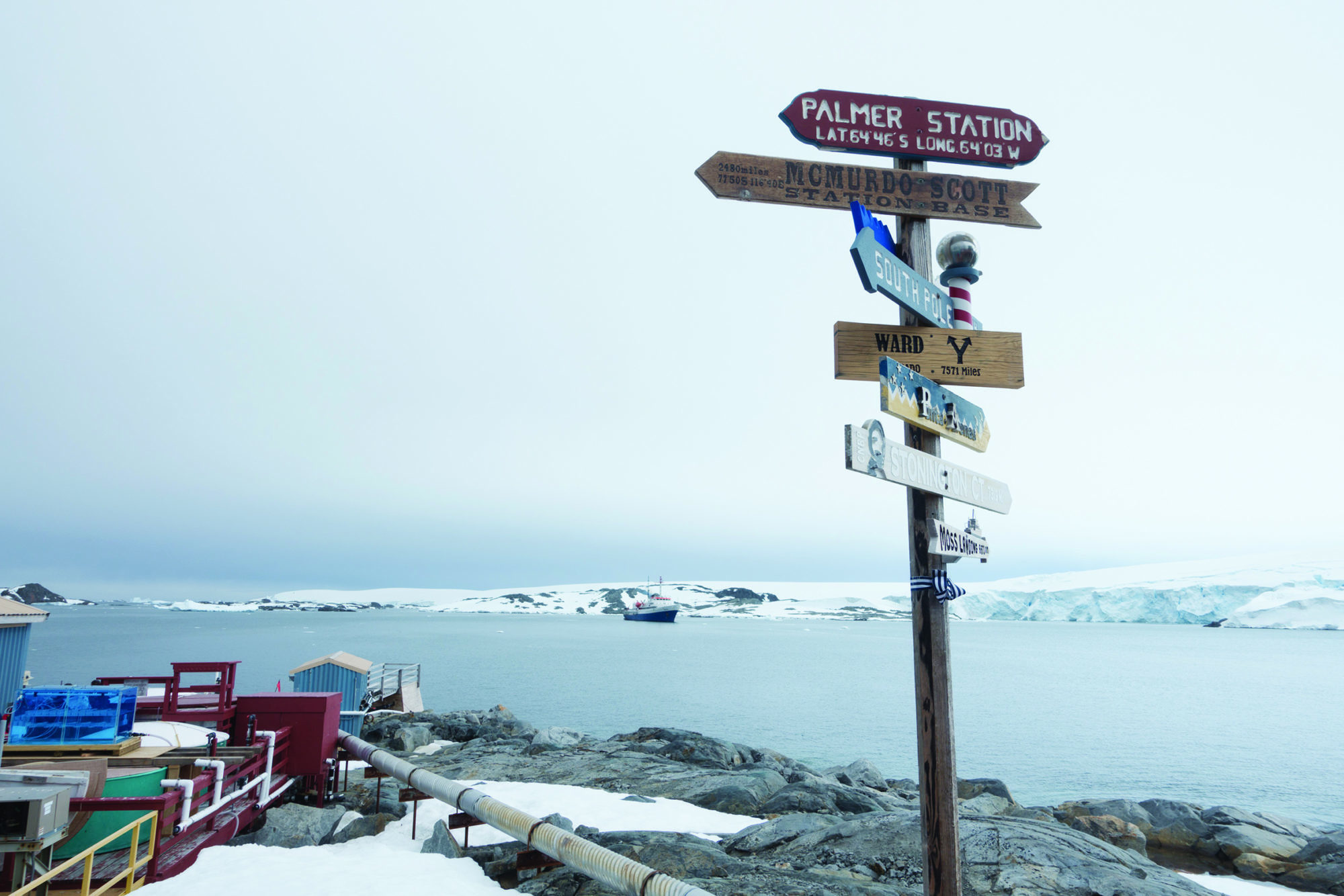In 2016, seventy-six female leaders in STEMM (science, technology, engineering, mathematics and medicine) fields set foot on a boat to Antarctica: this is the bare-bones premise of Ili Baré’s fly-on-the-wall documentary The Leadership (2020), which quietly tracks the twenty-day-long inaugural Homeward Bound expedition, an experiment aimed at empowering women in science. Baré’s film becomes a microcosm of both the systemic barriers that these women face in their professional fields and, more extensively, the grittier complexities regarding the kinds of leadership and support that are required to achieve gender equality.
The conceptual engineer of this venture is Fabian Dattner, an Australian ex-CEO with decades of experience as a leadership expert. The film’s prologue opens with her speaking over a shot of a ship surrounded by an endless ocean and towering ice shelves, describing her dream in 2014 of taking a big group of women to Antarctica. It ends with her paraphrasing the famous lines from TS Eliot’s poem ‘Little Gidding’ – ‘And the end of all our exploring / Will be to arrive where we started / And know this place for the first time’ – as her spark of inspiration. ‘Bam: that was it,’ Dattner says, before the film cuts to Ushuaia, Argentina, in 2016, where the first cohort boards the maiden Homeward Bound voyage.
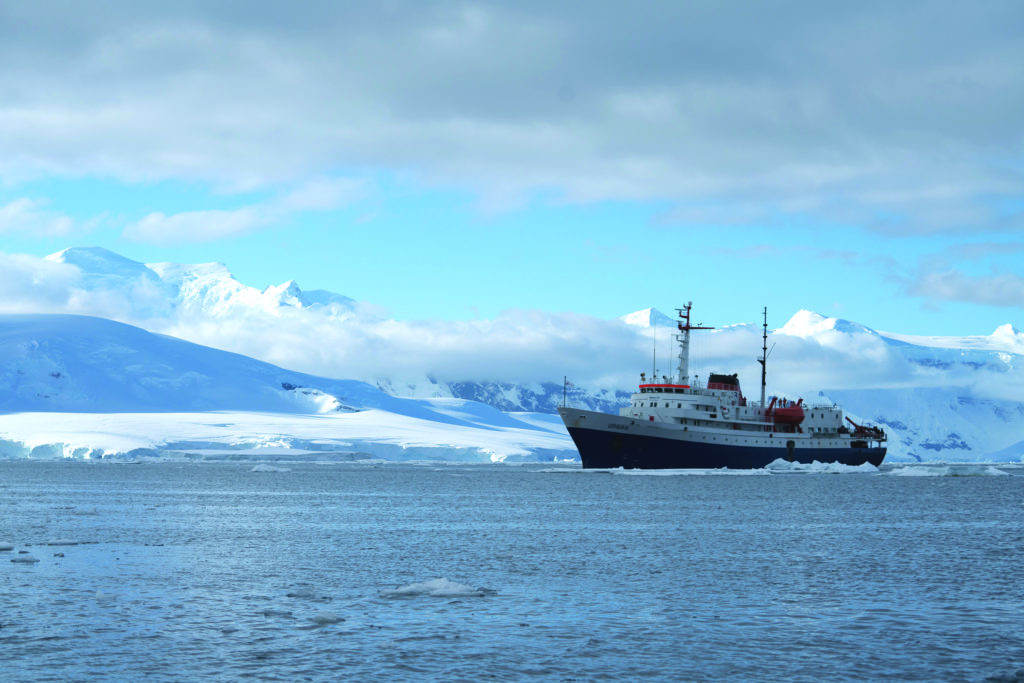
From here, Baré follows the leadership management team as they outline their optimistic expectations but also prepare for failures. ‘The greatest learning anybody will ever have is from the mistake they make, not from getting everything right,’ Dattner tells her faculty, stressing that the trip will only be 70 per cent as good as the next one. They strategise towards the longevity of the project, which is designed to eventually equip 1000 women over the course of a decade with the leadership skills to make an impact on the world. This mission is also underpinned by a recognition that women lead differently compared to their male counterparts, signifying a critical step towards building a sustainable global movement that can galvanise thought and lead to practical change.
But the fundamental test of their leadership skills is summed up in one key query posed by Dattner: ‘Can you do it as effectively when things aren’t good?’ It’s a question that gets to the crux of what makes The Leadership such a fascinating, layered documentary. The longer the voyage is at sea, the rockier the boat becomes – and what is initially run as a tight ship begins to break down, giving way to growing dissatisfaction and unexpected conflicts.
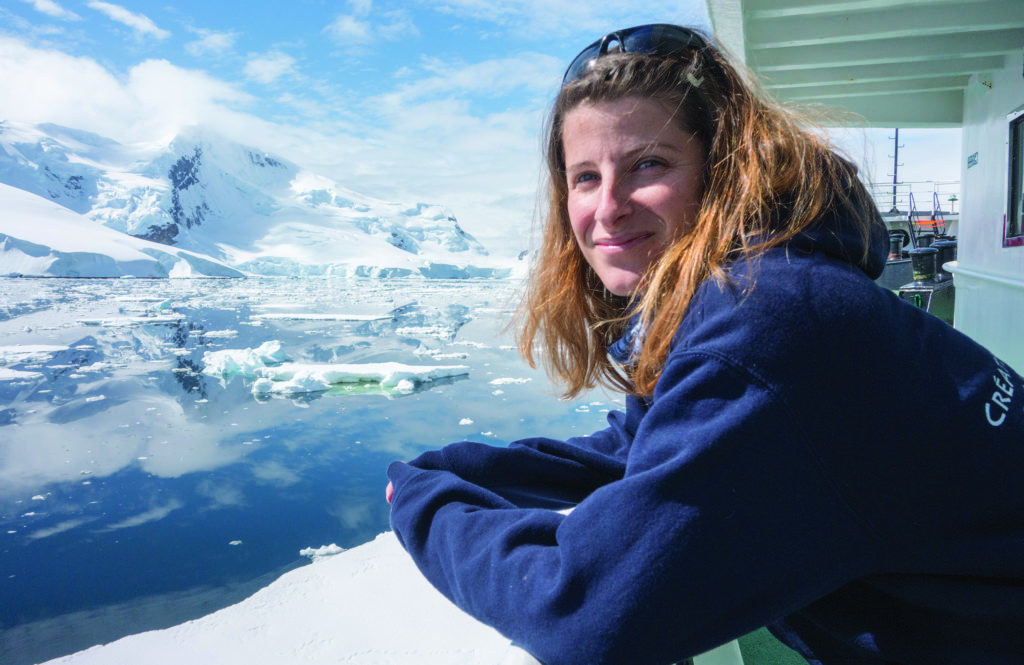
As a framing device, the documentary spends time with a select number of participants as they reflect upon their own lives leading up to the expedition, with their testimonies often interspersed with slides of facts and figures to more broadly contextualise the challenges they face in predominantly male workspaces. Among them is Anne Christianson, a biodiversity conservationist based in Washington, DC, who articulates the way science influences politics – and how the key decisions made in her city reverberate globally. There’s also Sarah Charnaud, a molecular parasitologist working at the Burnet Institute, who struggles with the uncertainty of not yet holding down a permanent position; and Deborah Pardo, a population modeller at Cambridge University, who questions presumptions regarding the automatic nature of the disadvantages women face when they have children. There’s an underlying pattern in how these women perceive themselves and value their own work: Charnaud has never asked for a promotion, and asks herself if she’s ‘good enough to stay’; while Pardo feels guilt about falling pregnant, and a fear of not publishing enough research papers to play catch-up with her male colleagues.
Although Baré chooses to focus on only a fraction of those on board, these accounts cumulatively paint a holistic picture of the discrimination faced by women in the workplace, and the way these experiences can be debilitating to the further progression of their careers. And when the participants tell their stories as they pass by adorable Adélie penguins and backflipping whales, an even greater sense of urgency is attached to the professional obstacles they face. Antarctica, as a magnificent natural beauty barely touched by human tourism, provides a weightier backdrop to the knowledge that the effects of global warming have long since begun to creep up beyond the stats and into reality. Pardo invokes the rapid decline of the albatross population; Samantha Grover, a soil scientist, marvels at finding moss under the soil of a glacier – the snow having melted away with the warmer climate. As the sea ice melts around the women scientists, it builds up the stakes in this documentary, serving as an alarm bell that an environmental revolution is needed to save the planet.
It’s in understanding this group’s brilliant minds and the bottomless expertise they offer that Baré’s perceptive documentary connects Dattner’s program and the potential of these women to make key differences in the future of environmental policy reform. Not only is the retreating Antarctica a symbol of what is happening to the rest of the world, but the seventy-six passengers on board are also a window into the different facets of the struggles women face in breaking the glass ceiling.
As a framing device, the documentary spends time with a select number of participants as they reflect upon their own lives leading up to the expedition, with their testimonies often interspersed with slides of facts and figures.
The remote setting, additionally, becomes a place of catharsis where the participants grapple with the consequences of everyday gender biases and find ways to overcome them. At the outset, there’s only eagerness and praise as they engage openly with the leadership facilitators’ group sessions, which encourage them to dig deep into their own thoughts and behaviours. The ship becomes a safe place in which they can lay their emotions bare and express honest feelings of discomfort from previous experiences. A refreshing dip in the icy shallows of the Antarctic waters likewise becomes a physical metaphor of participants’ own ‘cleansing’: it’s both a chance to immerse themselves in territories unknown and a sharp shock to their systems.
But over the course of the film, titters of frustrations begin to emerge. Samantha Hall, a built-environment researcher, casts the first wave of doubt, stressing that it shouldn’t be up to women to change ingrained social and cultural issues in the STEMM world, particularly where they pertain to men’s behaviour. Others convey disappointment that the talks don’t have clear facts or solutions, noting that the faculty of leaders do not appreciate that their audience is made up of highly educated scientists (in contrast to the corporate sessions the former are used to running). There are also clashes involving Christianson, who begins to feel ‘more offended than supported’ when she raises her hand to offer a dissenting opinion, as well as Nicole Webster, a marine scientist in the field of ecogenomics, who underscores the need for practical tools for making changes that go beyond attending leadership courses.
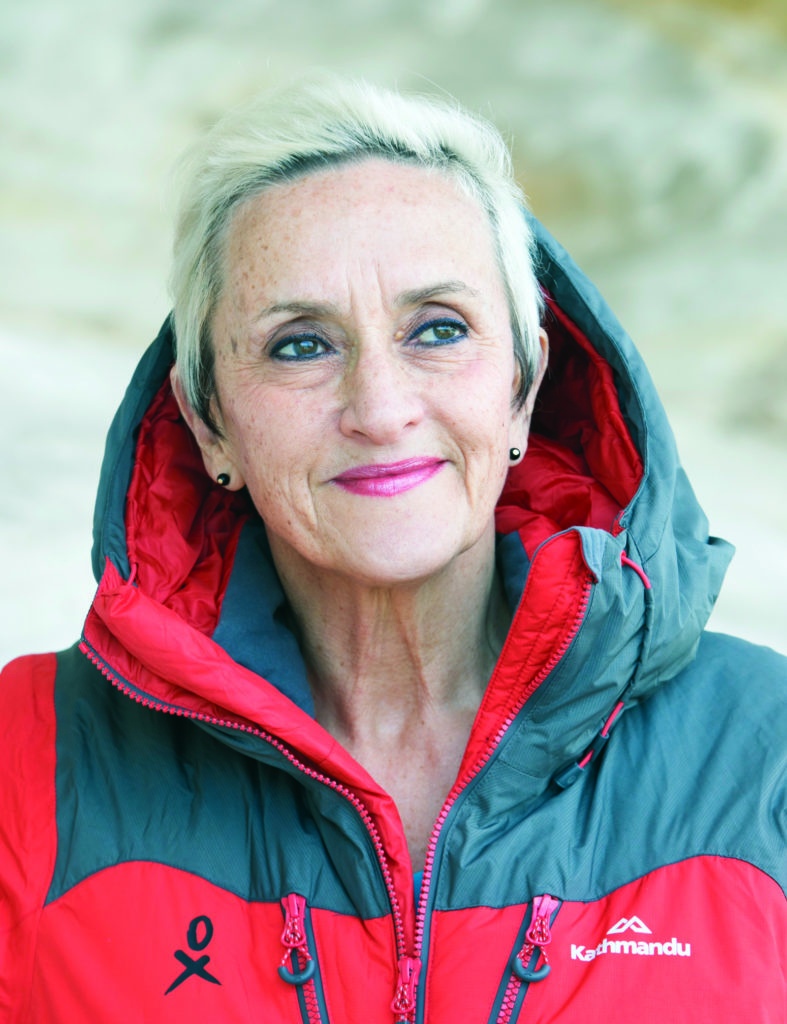
The most vocal challenger of the group, however, is Meredith Nash, a sociologist who doubles as a researcher on the impact of the Homeward Bound voyage. Earlier in the trip, she emphasises that the biggest enemy to equal gender representation is the idea that there aren’t enough women in the field to challenge and change research questions. She later questions why there aren’t more women of colour on the ship, recognising that ‘success often comes with skin colour’. The voyage’s lack of intersectionality is one of its major fault lines: besides Songqiao Yao – the onboard communications facilitator and a Chinese scholar who has studied abroad at both Cambridge and Oxford – there are no people of colour on board. Yao offers a contrasting perspective on environmentalism, emphasising the differences between leadership models in Western and Eastern cultures, which respectively promote more individualistic and more community-oriented frameworks. It’s a necessary angle to consider when it comes to adapting education strategies for different countries – especially with regard to China, which is the biggest carbon emitter in the world.
On the surface, as critic Jake Wilson observes, Baré’s hands-off direction is conventionally edited, following a chronological timeline as the days progress and playing the participants’ talking-head musings as part ‘travelogue’. However, by continuing to film the drama that occurs on board, she unveils the difficulty of devising a single ‘solution’ to the idealistic aims of the expedition, allowing the multiplicity of perspectives to speak for themselves. What emerges is friction over what leadership styles are best suited to actually create this change. ‘Just as Fabian found her leadership journey unexpectedly complex, so too I found the documentary edit once I returned,’ notes Baré in her director’s statement. ‘Every scene, it seemed, was like unpacking Russian dolls – inside one story lay another and another.’

Dattner is presented as a charismatic character, with gusto and an encouraging attitude that makes her easily likeable. She speaks frankly, delivering blunt observations like ‘meritocracy […] is unequivocally bullshit’, immediately capturing the attention of those around her. At the beginning of the journey, she channels her strong-willed, self-deprecating nature into inspiring TED-like lectures, and the group of scientists quickly warm to her. But it’s when she has her authority tested that the cracks in her leadership abilities become more obvious. Nash privately confronts her about the ‘overwhelming whiteness on the ship’, explaining that ‘whiteness actually enables leadership’ because ‘white people tend to pick white people’, and Dattner instantly deflects: ‘I’ve not heard that predisposition.’ Dattner’s own blind spots, and her inability to acknowledge them, become a sore point for others on the ship, who – as days pass – begin to take issue with her refusal to listen or engage productively in debate about the program. When Baré films her alone in her cabin, she dismisses the criticisms as ‘project[ing] something that isn’t there’.
Though Baré’s documentary grows more and more captivating as the circumstances spiral out of Dattner’s control, its observational style means it doesn’t extend to interrogating the systemic problems and biases inherent in the expedition itself.
By the end of the journey, Dattner is uncomfortably out of her league, even when it comes to maintaining her philosophy within her own leadership team, who speak out about the program’s absence of strategy implementation. In the final evaluations, one of the participants openly suggests to the group that ‘the one thing we would like to propose is to have a new facilitator for the whole voyage’. Baré astutely frames Dattner’s declining esteem among those on board and her increasing insecurities about this, cutting to a shot of her walking off the ship alone, past the tight circles of friendly participants hugging goodbye.
The more serious consequences of Dattner’s overconfident nature arise when the participants delve deep into their own personal traumas, particularly those related to experiences of sexual harassment, abuse and assault. As a result of the program’s aim to push participants to evaluate what has prevented them from progressing further in their careers in order to achieve ‘transformative change’, certain individuals must come to grips with dark parts of their personal histories. Lauren Sandon, an environmental consultant, recalls her distressing memories of being spiked and sexually assaulted by a male colleague, while Charnaud talks about a man who tried to take her clothes off without her consent. Both disclose their deep fears about the ramifications that speaking out would have had on their careers, while feeling lost in how they should proceed through these scarring incidents. However, the program’s inadequacy in providing the necessary support for these confessions is significant, most clearly evident when Dattner gloats about her thirty-five diagnostic accreditations, even expressing to the camera that this makes her more knowledgeable than a clinical psychologist. The rest of the leadership management team, too, are unequipped to deal with the fallout, leaving those wishing for answers on how to ‘let go’ of their trauma with unqualified advice. This flaw in the expedition’s preparation feeds into the disturbing revelation near the end of the film that there were allegations of sexual harassment and coercion by male crew members on the Homeward Bound voyage that very year, and that the poor reporting structure for responding to these incidents had correspondingly serious repercussions.
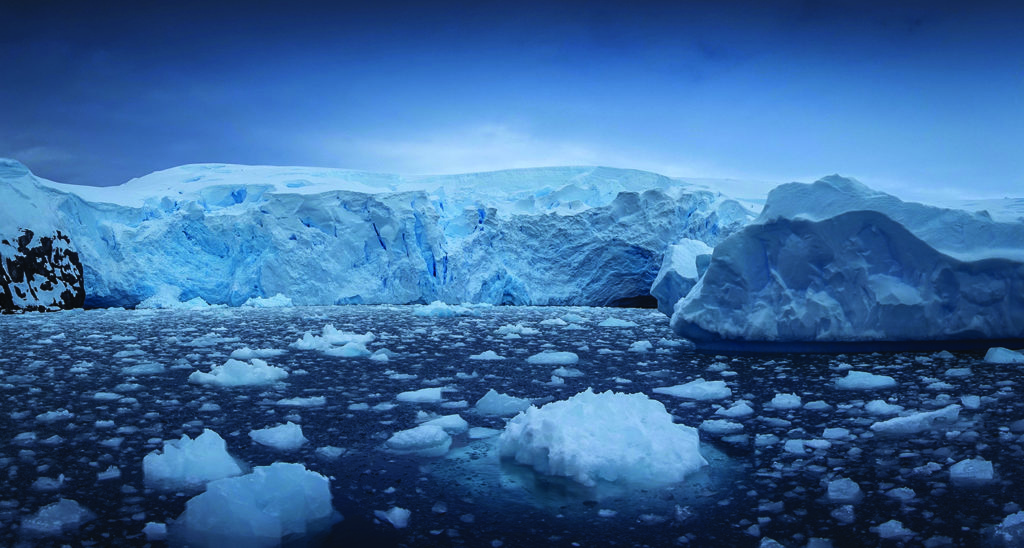
Though Baré’s documentary grows more and more captivating as the circumstances spiral out of Dattner’s control, its observational style means it doesn’t extend to interrogating the systemic problems and biases inherent in the expedition itself. Rather, it places a stronger emphasis on the network that the voyage has provided for the women scientists. In a flashforward one year later, Baré tracks her key subjects, depicting a cohort of women who are more ambitious and happier in their own skin. Yao has realised the opportunity to promote the connection between China and Antarctica by educating and cultivating the next generation of ‘little scientists, little biologists, little geologists’; Charnaud argues for seniority in her lab; and Pardo is all the more determined to fight for the ‘best for the environment and society’. Even Dattner reflects on what she has learned during the ‘pot-stirring’ first year of the program, relinquishing her own position as lead facilitator for future voyages.
In this way, The Leadership proves to be less about the dream of transforming these women’s lives than about investigating what leadership entails, and the trickiness of actually putting it into practice. While the accelerated program may prove a hopeful initiative dealing with an intrinsic problem that will take generations to fix, Baré’s film shows that these two notions are ultimately inextricable.
